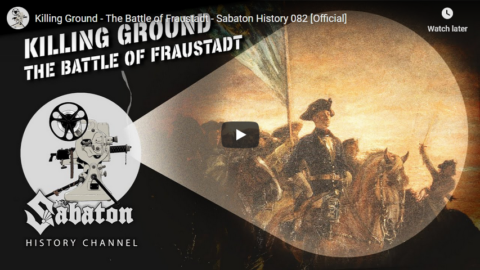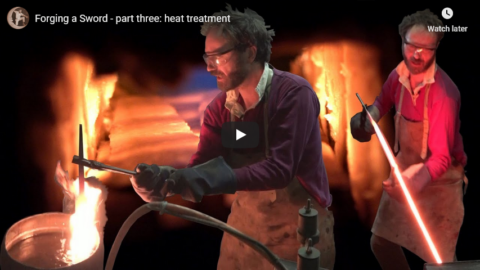Biographics
Published 6 Feb 2020Check out Squarespace: http://squarespace.com/biographics for 10% off on your first purchase.
This video is #sponsored by Squarespace.
TopTenz Properties
Our companion website for more: http://biographics.orgCredits:
Host – Simon Whistler
Author – Radu Alexander
Producer – Jennifer Da Silva
Executive Producer – Shell HarrisBusiness inquiries to biographics.email@gmail.com
August 28, 2020
George Stephenson: The Father of the Railways
National “cheater density” for popular online games
Richard Currie summarizes the findings of Ruby Fortune’s cheater research (note that there’s no data on China because reasons):
Ever torn your keyboard from the desk and flung it across the room, vowing to find the “scrub cheater” who ended your run of video-gaming success? Uh, yeah, us neither, but a study into the crooked practice might help narrow down the hypothetical search.
The research, carried out by casino games outfit Ruby Fortune, has produced a global heatmap of supposed cheater density.
According to the website, this was done by analysing “search trend and search volume data to reveal where in the world is most likely to cheat while playing online multiplayer video games”. The report looks at the frequency of search engine queries for the most-played video games and measures them against searches for related cheat codes, hacks and bots, to show which country has the highest density of cheaters, and which cheat categories are the most popular in each location.
[…]
There is a massive hole in the data, however, thanks to the Great Firewall of China, which has a terrible reputation for ruining the experience of online games.
If there was any doubt that the Middle Kingdom would otherwise take Brazil’s crown, consider that Dell once advertised a laptop for the market by saying it was especially good for running PUBG plugins to “win more at Chicken Dinner”, a reference to the “Winner winner chicken dinner” message that comes up on a victory screen.
Data from the Battle Royale granddad’s anti-cheat tech provider, BattlEye, has also suggested that at one point 99 per cent of banned cheaters were from China.
“Killing Ground” – The Battle of Fraustadt – Sabaton History 082 [Official]
Sabaton History
Published 27 Aug 2020Poland, February 1706. Near the small town of Fraustadt the taste of battle fills the air. General Rehnskiöld of the Swedish Empire readies his 10,000 soldiers. Their enemy? The numerically superior Saxon army of General Schulenburg, numbering 20,000.
At stake? The fate of thrones and empires.Support Sabaton History on Patreon: https://www.patreon.com/sabatonhistory
Listen to “Killing Ground” on the album Carolus Rex:
Carolus Rex (English Version) – https://music.sabaton.net/CarolusRexEN
Carolus Rex (Swedish Version) – https://music.sabaton.net/CarolusRexSEListen to Sabaton on Spotify: http://smarturl.it/SabatonSpotify
Official Sabaton Merchandise Shop: http://bit.ly/SabatonOfficialShopHosted by: Indy Neidell
Written by: Markus Linke and Indy Neidell
Directed by: Astrid Deinhard and Wieke Kapteijns
Produced by: Pär Sundström, Astrid Deinhard and Spartacus Olsson
Creative Producer: Maria Kyhle
Executive Producers: Pär Sundström, Joakim Brodén, Tomas Sunmo, Indy Neidell, Astrid Deinhard, and Spartacus Olsson
Community Manager: Maria Kyhle
Post-Production Director: Wieke Kapteijns
Editor: Iryna Dulka
Sound Editor: Marek Kaminski
Maps by: Eastory – https://www.youtube.com/c/eastory
Archive: Reuters/Screenocean – https://www.screenocean.comAll music by: Sabaton
An OnLion Entertainment GmbH and Raging Beaver Publishing AB co-Production.
© Raging Beaver Publishing AB, 2019 – all rights reserved.
From the comments:
Sabaton History
2 days ago
Not for the first time, and certainly not for the last, an important battle is fought on Polish territory. This time, however, neither of the armies involved belong to Poland. Looking at the troop numbers counts, the outcome would seem settled before it even began. Yet, if we have learned anything from other battles on Polish soil, unpredictability is a word that can be applied time and time again.With the help of Indy and the TimeGhost team you can learn more about future battles on Polish territory in these two episodes from our own channel and the “World War Two In Real Time” series:
“40:1” – The Battle of Wizna – Sabaton History 001 [Official]
https://www.youtube.com/watch?v=Qpb8gTSMUboThe Polish-German War – WW2 – 001 – September 1, 1939 [IMPROVED]
https://www.youtube.com/watch?v=2b7GY4BSUmU
Britain’s National Trust decides to go in a radically different direction
If you’ve ever visited the UK, you’ll almost certainly have seen some National Trust historic properties in your travels. Despite the name, it’s not a government-affiliated organization, so the Trust has its mission set by its own leadership … and the current leadership are apparently turning their back on the tradional role of the Trust “due to the pandemic”:
From its establishment in 1895 by Octavia Hill, Sir Robert Hunter and Hardwick Rawnsley “to promote the permanent preservation for the benefit of the Nation of lands and tenements (including buildings) of beauty or historic interest”, it has become the pre-eminent haunt of the tasteful middle classes, and is as much part of national life as that other much-lauded institution, the NHS. I have fond memories from my own childhood, and beyond, of walking round grand houses and of playing in their lavish and beautifully appointed grounds. Even their names produce a kind of Proustian rush in me – Felbrigg, Blickling, Stourhead, Dyrham Park, Kingston Lacy. In an uncertain and constantly changing world, the National Trust seemed to be almost a secular church, a rather well-appointed and comfortable Rock of Ages in its own right.
Yet we live in a time when a grubby little pandemic has turned all certainties upside down, and so even the National Trust has had to rethink its plans for the future. Unfortunately, its method of so doing seems to be both destructive and ill-considered. Some might call it woke, if it weren’t for the fact that its actions do not seem to be dictated by panicked social change, but instead by the reported £200 million loss that the coronavirus outbreak has occasioned. Despite having an endowment of over a billion pounds, and still retaining the annual memberships of over five million people, elements within the organisation that long for disruption seem now to have grasped the initiative, with potentially disastrous consequences for both the Trust and the country at large.
An internal briefing document that was leaked to the Times by a no doubt furious insider represents a chilling account of a cull of both heritage and expertise. It describes the status quo as “an outdated mansion experience”, and one that exists only to serve “a loyal but dwindling audience.” It plans to deal with this old-fashioned situation by firing dozens of its curators, placing large amounts of art and antiquities in storage, and by closing most of the properties to the public, instead letting them be hired by corporate entities and the well-heeled for private events, or “new sources of experience-based income”. As the document put it, the Trust wishes to “flex our mansion offer to create more active, fun and useful experiences.” Flex. Mansion Offer. We are, it seems, at the end of days.
I briefly considered, before writing this article, attempting to hold a séance to try and obtain James Lees-Milne’s views from beyond the grave, but eventually decided against interrupting his eternal rest to inform him of the disappointing and frightening news. Yet this situation does not need the phantoms of long-dead architectural historians to fan the flames. There are plenty of living people who are equally, and vocally, appalled, ranging from those who cancelled their memberships to the Trust when the institutional ties were no longer available in their gift shops to the curators, historians and architectural consultants who stand to lose both income and professional standing if these ill-considered and short-sighted reforms are brought about.
The art historian and broadcaster Bendor Grosvenor has been especially exercised by the revelation of the Trust’s plans. He has described their restructuring ideas in The Art Newspaper as “one of the most damaging assaults on art historical expertise ever seen in the UK.” Grosvenor has since been assiduously passing scathing commentary on the various public statements, of varying degrees of disingenuity, made by various high-up executives at the National Trust, none of which have denied that historic properties will be “repurposed”, that the specialist curator posts will be “closed” and the expert curators fired, nor, perhaps most chillingly of all, that the Trust will be seeking to “dial down” its status as a “major national cultural institution”.
About thirty years ago, when we could afford to travel more often, we had a family membership in the National Trust even though we’d only get to visit National Trust properties for two-to-three weeks in a given year. I’m very disappointed to hear about this planned change to the organization, but the chances of me visiting the UK anytime in the next few years are quite low, so I may not have to worry about it personally.









